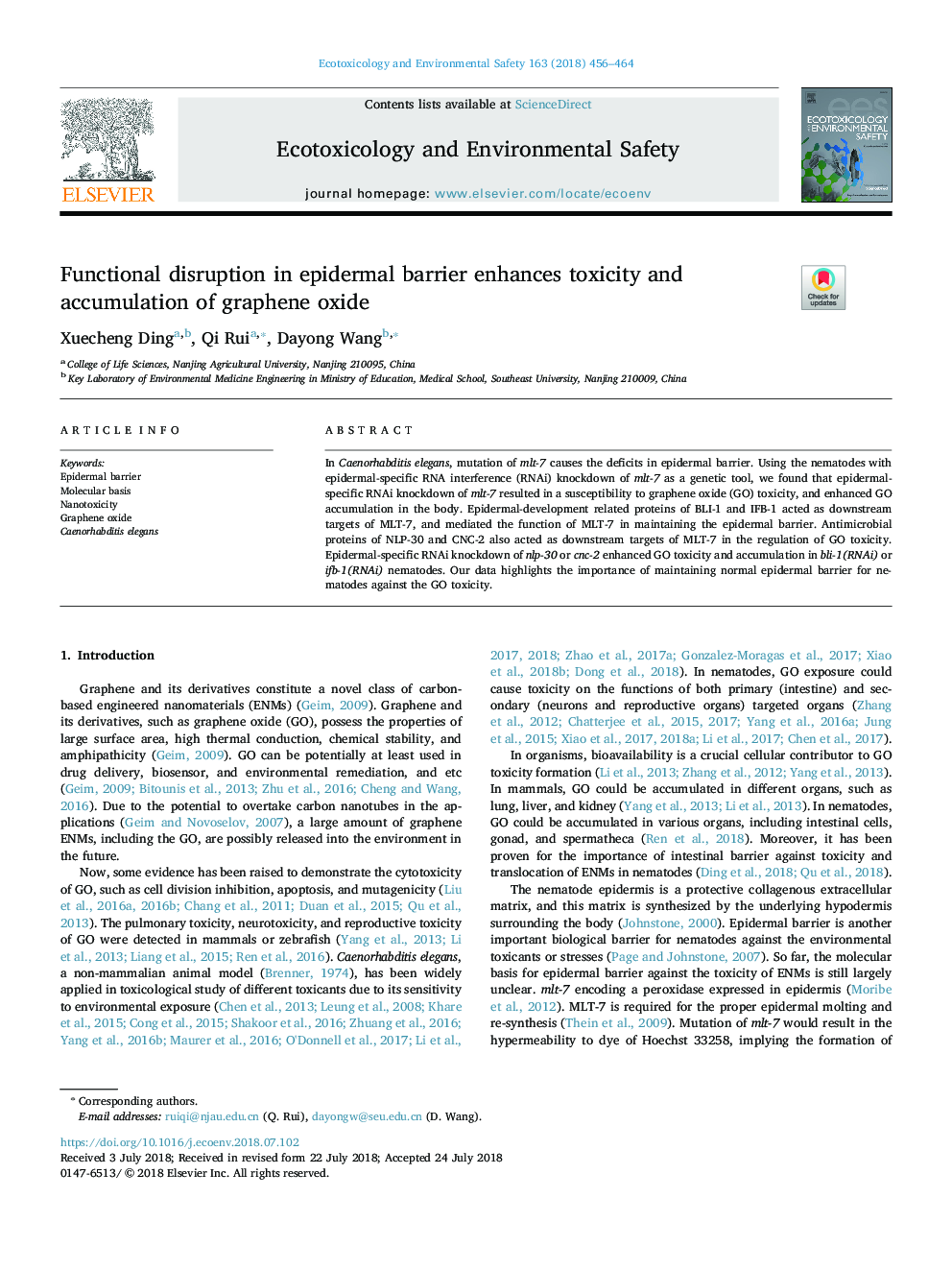| Article ID | Journal | Published Year | Pages | File Type |
|---|---|---|---|---|
| 8853394 | Ecotoxicology and Environmental Safety | 2018 | 9 Pages |
Abstract
In Caenorhabditis elegans, mutation of mlt-7 causes the deficits in epidermal barrier. Using the nematodes with epidermal-specific RNA interference (RNAi) knockdown of mlt-7 as a genetic tool, we found that epidermal-specific RNAi knockdown of mlt-7 resulted in a susceptibility to graphene oxide (GO) toxicity, and enhanced GO accumulation in the body. Epidermal-development related proteins of BLI-1 and IFB-1 acted as downstream targets of MLT-7, and mediated the function of MLT-7 in maintaining the epidermal barrier. Antimicrobial proteins of NLP-30 and CNC-2 also acted as downstream targets of MLT-7 in the regulation of GO toxicity. Epidermal-specific RNAi knockdown of nlp-30 or cnc-2 enhanced GO toxicity and accumulation in bli-1(RNAi) or ifb-1(RNAi) nematodes. Our data highlights the importance of maintaining normal epidermal barrier for nematodes against the GO toxicity.
Related Topics
Life Sciences
Environmental Science
Environmental Chemistry
Authors
Xuecheng Ding, Qi Rui, Dayong Wang,
